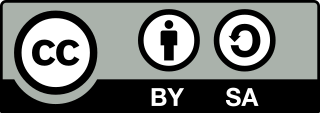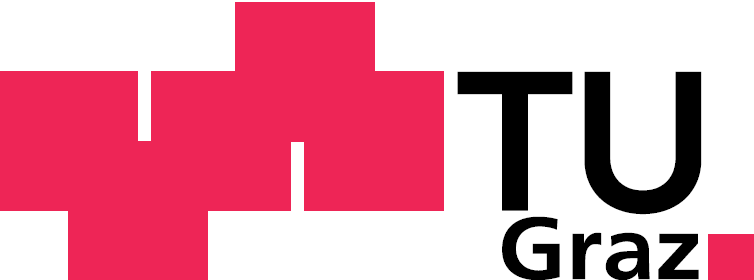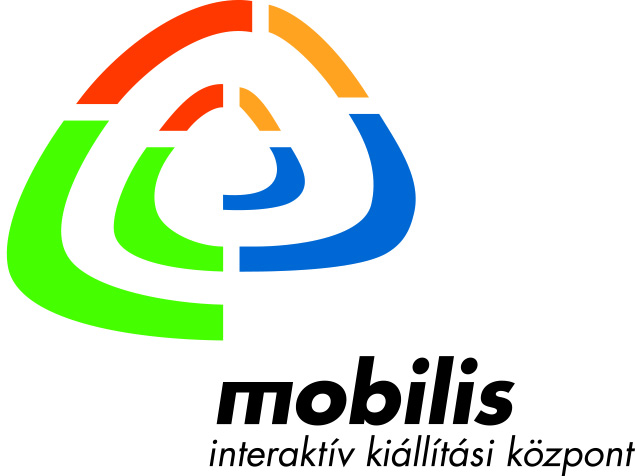Module 10
AI and environment
"Artificial intelligence is neither good nor bad. It's a tool. It's a technology that we can use" - Oren Etzioni
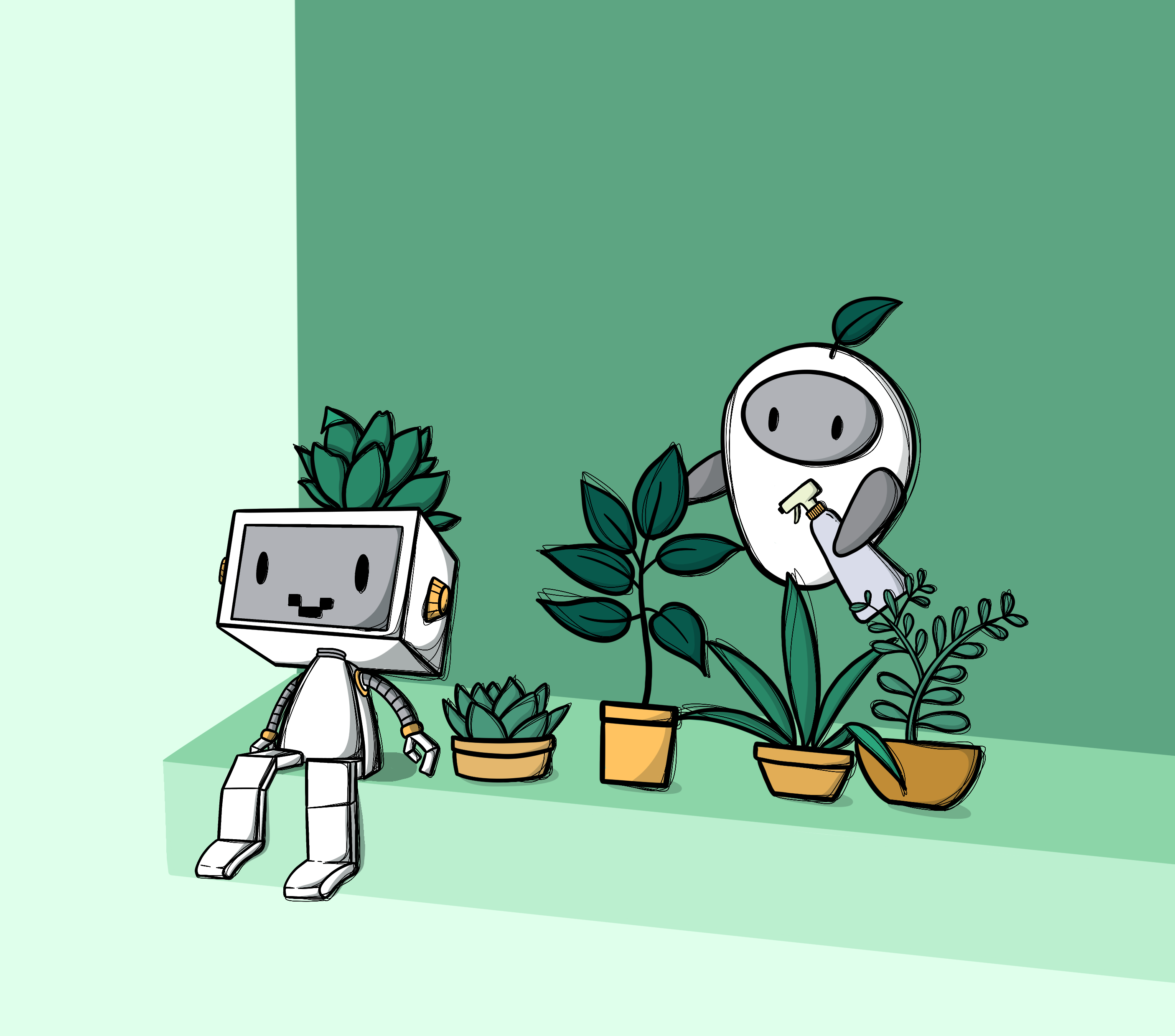
About the module
In this module, the students independently develop content on environmental aspects in computer science with the help of a "green" portfolio. It is advisable to form small groups right at the beginning of the topic block, since tasks and discussions are to be carried out in the team again and again, even during theoretical inputs.
The first half of the portfolio focuses on your own use of technology and individual energy consumption. The students should become aware of how much CO2 is emitted through the use of smartphones, computers, etc. and what effects this has on our environment. In the second part, the students themselves become developers. Inspired by examples shown by the teachers, they should come up with an application that can protect the environment. However, this exercise is more of a kind of ideas laboratory in which the students exchange ideas, make sketches and revise their ideas in discussion groups than the actual programming and implementation of projects.
With the help of this module, problems in IT should be pointed out and students should reflect on their digital consumer behavior. At the same time, design and problem-solving skills are trained, with the help of which they can rethink current environmental and climate problems in the form of their "green" app and try to find suitable solutions for them.
Goals
The students are able
- to reflect on their own digital consumption and the associated carbon footprint
- to recite measures for more gentle use, but are also able formulate them independently
- to recognize digital "climate killers" and already know some (e.g. crypto mining and video streaming)
- to describe technical applications that already have a positive impact on the climate
- to develop and refine their own ideas in teams
Schedule
| Time | Content | Material |
|---|---|---|
| 20 mins | Theory with exercises - climate killer AI? | Slide Set 1 |
| 40 mins | Portfolio | Worksheet |
| 20 mins | Theory - Climate Saver AI? | Slide Set 2 |
| 70 mins | Exercise: Green AI Idea Lab | Slide Set 3 |
Introduction
Digitization has become an integral part of our everyday lives, more than half of the world's population is now online (63.1%, as of 2022). In 2022, 5.03 billion people will already be using the Internet, which means that the energy requirement due to online activities such as cloud computing, streaming services and cashless payment systems will continue to increase every year (see report by the digital agency We Are Social).4
But what many people don't realize is that smartphones nowadays require more energy than refrigerators; not because of the frequent charging of the batteries, but because of the resulting data traffic.5
But it doesn't just play a role in our private lives, it also plays a role in industry and agriculture, but it also offers new solutions in environmental and climate protection. With the constant increase in digitization, however, more and more powerful servers, data centers and end devices are required. On the one hand, digitization can offer solutions, but on the other hand, it is also a huge problem due to high energy consumption, exploitative and environmentally harmful production processes and the short lifespan of many devices.
Climate killer AI?
Task: guessing game
Students see that there are 7.98 billion people on Earth. Ask them to estimate how many own cell phones, how many use the internet and how many actively use social media. For this guessing game, either individual votes from the plenum can be collected or the students can either arrange themselves in a number line in the classroom or you can simply draw this number line on the blackboard and the students should give one line for each estimate.
After each round, the respective result is published.
Green IT
Everyone now knows that driving a car and flying around the world is bad for the environment. However, most users of electronic devices are not even aware that the use of information technology also has a massive impact on our environment. Computers, smartphones and the internet can also be true "climate killers". Due to the excessive mining of rare metals and earths such as cobalt and tantalum, there is a shortage of resources and due to the increasing energy consumption due to the many electronic devices, we humans leave an enormous footprint in our environment. It is therefore all the more important that everyone makes a contribution to environmental and climate protection. The term "Green IT" therefore examines the energy efficiency and environmental friendliness of IT devices and programs more closely.
The emission rate in the field of information and communication technology (ICT) has meanwhile overtaken that of air traffic! Global CO2 emissions in the ICT sector increased their share of global CO2 emissions between 2013 and 2020 from 2.5 to 3.2 percent. The current CO2 emissions of ICT are now comparable with those of the entire Middle East in 2017! (cf. The Shift Project) 3
ICT is in a quandary: on the one hand, emissions should be reduced as much as possible, on the other hand, users expect better performance when using their technical devices.
While the use of renewable energy is becoming more common, electricity is being conserved and unnecessary traffic is being curbed, internet use and the performance within these technologies continue to increase sharply. Streaming services like YouTube, Netflix, and Spotify are heavy data users and are growing fast, but ordinary websites are also becoming data-intensive. According to the website HTTPArchive.org, the average web page size today is almost four times what it was in 2010 and counting. The use of information technology leads to higher CO2 emissions due to the increased use of devices such as computers, mobile phones, printers, routers, but also servers and the associated cooling of these. At the same time, the use of these devices can lead to emissions from (business) trips or However, freight transport can also be minimized and processes improved.
Mobile Phone Usage
Meanwhile, there are more than 5.5 billion mobile phones in circulation (as of 2020), but in 2017 there were "only" 4 billion. But it's not just the fact that more devices are being used that harms the environment, the increased use of various apps increases the power consumption of smartphones. Because although battery performance has increased by 50% in recent years, smartphones are charged just as often as before. 4
Music and video streaming
Music and video streaming is now one of the largest consumers of electricity, because videos account for more than 75% of data traffic on the German Internet. Globally, the average is more than 60%. These are mainly online videos that can be played on the end device without prior download. Particularly high-resolution technologies such as "4K" are one reason for the large amount of data. Every minute, 167 million videos are watched on TikTok and 694 thousand hours of videos are streamed on YouTube.1 But music streaming also causes high CO2 emissions. Music streaming services caused 200 to 350 million kilograms of greenhouse gas emissions in 2015 and 2016 and is therefore more harmful than the production and disposal of CDs and vinyl records.2
internetlivestats.com
Via the website www.internetlivestats.com, data such as the number of websites, sent emails or viewed YouTube videos can be displayed in real time.
What action can be taken now?
- Physical servers can be virtualized: Since physical servers are often only used to 15-30%, they can be divided into several virtual servers in order to use them as best as possible. This saves electricity during both operation and cooling.
- Cooling systems for servers can be revised or replaced
- Use of "green", energy-efficient hardware, reduction of critical metals in building components
- Rethinking your own usage behavior (raising awareness through energy measurements and saving energy, for example by switching off devices that are not required)
- Use of renewable energy (wind, sun, water, etc.)
- Recycling of key raw materials
Material
Exercise
Think together in class: what other measures can you think of spontaneously concerning your own consumptation?
What action can you take?
- Only buy devices when you really need them. If a device breaks, try to have it repaired or buy it used.
- Use your smartphone, laptop or TV sparingly. Concentrate on one device and don't let others run parallel.
- Save electricity with switchable power strips
- Small screens use less energy than large ones
- Stream consciously: Disable the autoplay function and only watch the content that really interests you.
- Turn down the image resolution. Because: With the highest resolution, 23 times as much data is used per hour as with a lower one.
- Voice calls are more economical than video calls
- Clean up your inbox and your cloud storage: delete emails that you don't need. You can also move other files that you have stored in the cloud or online to a hard drive or delete them if you no longer need them.
- ...
References
Exercise
Estimate in groups how many hours the average person uses the Internet (via smartphone, computer, Smart TV, game consoles, etc.).
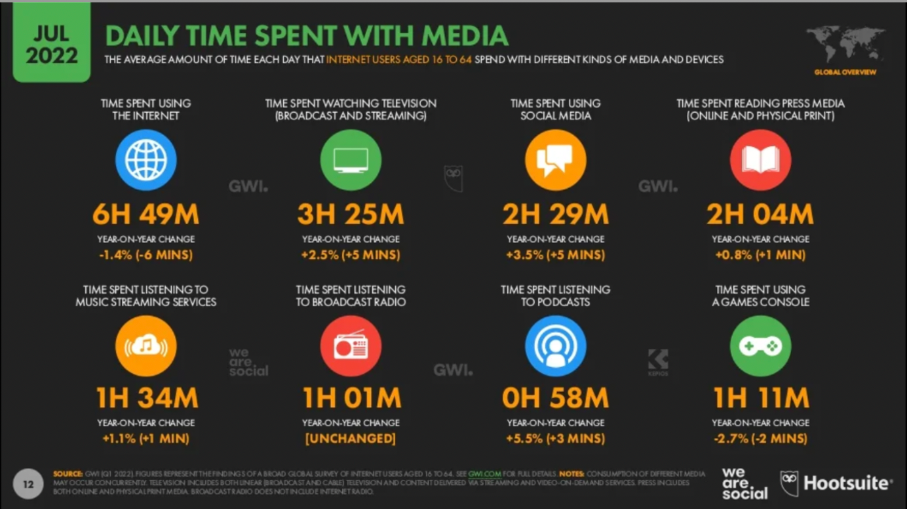
In Austria it is 05:55 a day, in Germany 05:32 (We Are Social has no data for Hungary)
Green Portfolio
It's difficult to improve things when you're not aware of the impact. For this reason, the students should carry out some (or all) of the tasks from our suggestions to see how much energy their digital everyday helpers require. Thanks to functions on the smartphone, apps such as or websites such as WebsiteCarbon.com, which measures the CO2 emissions per page view, one's own consumption can now be tracked with just a few clicks.
- How much time do I spend on my smartphone? The students should write down how long they have used their smartphone in the last three days. Below the overall display, the usage times for the individual apps are broken down, which could also be interesting for some students.
Android users can find the "Digital WellBeing" function in the settings and iPhone users can go to the "Screen Time" function. For both operating systems there is also the option of setting a timer, which pauses apps after a certain period of time. This type of intervention can also be addressed and reflected upon in joint plenary discussions. - How much data am I using? The data usage or data consumption can be checked on every mobile phone. The students should document the data consumption of the last three days and, if possible, write down the names and data consumption of the apps they use most.
- 140 g of CO2 are generated per gigabyte - CO2 measurements from my favorite websites: Students can use the website https://www.websitecarbon.com to determine the CO2 emissions of various websites. All they have to do is paste the relevant link into the website's search bar and click "calculate". Since the page is only available in English and the comparisons below the result are therefore more difficult to understand, it is advisable to let the students research in small groups.
The students should record the CO2 emissions from at least three websites and make a comparison of each. The last two comparisons are probably the most vivid, in which the CO2 emissions are compared with the number of trees required to break them down again and the electrical energy to operate a car.
A small comparison: an average website needs about 6.8 grams of CO2 per page view, the most efficient website is that of Elon and Kimbal Musk (www.muskfoundation.org) and only needs 0.009 grams of CO2. However, it remains to be seen whether every website should be so minimalistic. - How much energy do search engines need? Google has revealed a closely guarded secret: the power requirements of its data centers. As the New York Times reports, the company continuously uses 260 million watts - about a quarter of the output of a nuclear power plant, and enough to power a city of up to 200,000 homes. Despite this gigantic number, people have to consider how much energy would be saved by Google's offers, Urs Hoelzle, vice president of the company, told the newspaper. If you use a search engine, for example, you don't have to drive to the library, which saves fuel. 9 Research: Which "green", alternative search engines are there? What are the advantages and disadvantages of this? Are these search engines actually more environmentally friendly than Google?
- My carbon footprint: There are now a variety of online tools to determine your own carbon footprint. The questionnaires are extremely detailed, so enough time should be allowed for them. The Klima Arena calculator was developed especially for schoolchildren and is available in German: https://klima-arena-jugend.co2-rechner.de/de_DE/start#panel-calc
As an alternative, the WWF calculator can be used, which is available in German and English: the German questionnaire, the English questionnaire
At the end of the questionnaire, not only the CO2 consumption is shown, but also tips on how to reduce it even further. Here it would be possible to write down and collect tips that the students are most likely to be able or want to implement. - After the students have dealt with their own consumption and have already learned a few tips, at the end of this phase they should think again about which points are important for them personally and how they use energy can save. These points can serve as a starting point for further steps in the second work phase, the development of an AI application.
Material
References
Climate Saver AI?
Digitization should not only be seen as a power guzzler and climate killer, as portrayed in many public and political debates. As mentioned in the first part of the teaching module, the main focus of the accusations is the increasing consumption of energy and resources. The training of AI programs can be used as an example here. OpenAI's GPT-3 model, which was developed for text generation, required several thousand days to process a data set with approximately 500 million words for training. This resulted in around 313 tons of CO2. 13 That's about five times what an American car uses over its entire life cycle (both production and fuel consumption). Data centers are already 2% of today's global power consumption today, which means that the same amount of CO2 is generated as in the aviation sector. 12
In fact, digitization can have positive effects for environmental and climate protection by linking real-time data and countless devices (see "Internet of Things").
AI reduces emissions
Scientists argue that although training AI systems is energy-intensive, AI systems can reduce emissions in the longer term: e.g. a thermostat in the Smart Home, which learns from the resident's routines and adapts heating periods to their presence and absence. It would also be possible to intelligently link weather data, forecast models and the actual heating data in order to heat buildings as efficiently as possible.
When driving a car, it is sufficient with a lane keeping assistant, for the programming of which the energy required for the construction of this vehicle is energetically compensated, if this lane keeping assistant can prevent an accident.
CO2 emissions can also be reduced by smart traffic control. By using cellular data, traffic flow can be measured, making traffic condition reports much more accurate and sent to affected drivers. But traffic light controls and speed controls could also be controlled by AI systems in order to save energy. 13
"Google, for example, has developed an intelligent control system in its subsidiary Deepmind, which it says has reduced the energy consumption of its data centers by 40 percent. Every five minutes, the cloud-based artificial intelligence analyzes the cooling systems in order to use sensor data to predict the air pressure or temperature over the next hour. The human controllers can then turn the screws to ensure the most fuel-efficient operation possible." 11
The sector of "Smart Farming" has meanwhile established itself, whereby, for example, fertilizers and pesticides can be used with pinpoint accuracy through AI programs in order to work more resource-efficiently. By using IoT (Internet of Things), the processes in field work can be made more efficient and the best possible results can be achieved during the harvest. The use of digitization not only makes it possible to work more efficiently, it can also work in a more climate-friendly and environmentally friendly way (fewer pesticides, more precise use of agricultural equipment). 13
Transparent people and data bias
In all of the projects and possible uses presented, a large amount of data is used. Exactly what data is can be looked up in the basic module or communicated with the help of it. If personal data is used in these programs, e.g. in the "Smart Home" or in smart traffic control, data protection plays an important role. You may have come across the term "transparent person", which is used as a (negative) metaphor for data protection. This means that personal data is passed on voluntarily, but also involuntarily, which makes people "transparent" as "transparent". Much is now revealed very openly when you click through social media profiles, but data is also collected involuntarily. This is how Google knows after a while where a person works or lives.
Data biases, on the other hand, are created by feeding in and/or processing faulty data. This can result in discrimination against certain groups of people. At Amazon, for example, mainly white men were suggested for a position in a job application, since according to the data, mainly white men worked in the company before. You can read more about this topic in our ethics module.
With the current state of knowledge, it is not yet possible to answer whether digitization as a whole is contributing to a burden on the climate and thus also to accelerating climate change or rather to relieving the system. Although a large number of studies are being carried out on the opportunities and challenges of digital change, they do not reflect a clear opinion or they even contradict each other. In addition, current studies only deal with the topic very one-sidedly and only focus on the energy consumption of digitization, whereas many other areas of influence of digitization have to be taken into account (e.g. use of raw materials, land consumption, soil and water pollution...).
Material
References
"Green AI" idea lab
During this task, the groups of students are given a large sheet of paper (preferably A2) to record and visualize all their steps. The students can write and stick on texts, design logos and make sketches.
Brainstorm
In the first step, the students sit down in their small groups and talk about the environmentally friendly measures they have collected from their portfolio and the practical examples of environmentally friendly AI applications.
They should then create a top 3 list of ideas and finally decide on one of the listed areas or problems for which they want to develop a program/app themselves.
Specification
In the next phase, the specification begins: the students should think about what exactly the goal of their application should be and which functions they should be able to do. All points that need to be considered should be written down.
The following questions can be helpful:
- What is the goal of your app? What exactly is she supposed to do? How can the idea work?
- How will you make your app appealing to your users?
- What are you planning to do? What problem do you want your app to help solve?
Design
The next step is about the concrete design of the application. The students come up with a project name, can design a logo if they want and design a kind of wireframe to visualize how the program can look like and work. When individual windows of the program are designed, the students can also understand whether the structure itself makes sense or whether they have neglected important aspects.
Presentation at World Café
At the end of the first development phase, the World Café method provides an exchange and the opportunity to give feedback. Since this method takes at least one hour, the results can also be presented directly in the plenum without a revision phase taking place.
With this method, one group member always remains seated at the table as a moderator, while the other members go to other tables and have the projects of the others explained to them in order to be able to give feedback.
The students have the opportunity to record keywords, questions or sketches on a large sheet of paper that acts as a tablecloth, so that the groups can later continue working with the written feedback.
After about 10 minutes, the groups switch tables and move on to the next project to discuss it.
Revision
Back in the original small groups, the collected feedback can be discussed on the paper tablecloths and considered what they want to include and how.
Final presentation
The students briefly present their idea again and explain where there were difficulties, what the feedback was like, what they included, what not and why.
At the end, the final poster can be hung up in the classroom, for example.



